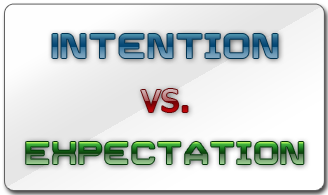Published on: March 16th, 2015 | Author: 411 Locals | Category: Marketing
Reading Time: 5 minutes Security blanket? Human pack instinct? A desparate distraction from lack of substance? Most people cringe at buzzwords, yet they’ve become such a common part of how businesses talk within their walls that it’s spilling over into how they talk to customers, even how they see their customers. “Well the employees seem to love synergy, let’s invade customers’ ears with this meaningless abomination of the english language,” might be the thinking, more likely though it’s just around so much that no one takes notice, no one is there to put a stop to the madness. It’s corporate turrets. Some new words are truly needed, with new meaning, usually born of necessity due to some new technology. Others were once just fine but have been twited or overused and left weak, boring, even annoying due to this. Still others are and always have been simply silly. What’s the answer? Here are some of the buzzwords (and a fast-spreading grammar disease) that should be permanently laid to rest.
Security blanket? Human pack instinct? A desparate distraction from lack of substance? Most people cringe at buzzwords, yet they’ve become such a common part of how businesses talk within their walls that it’s spilling over into how they talk to customers, even how they see their customers. “Well the employees seem to love synergy, let’s invade customers’ ears with this meaningless abomination of the english language,” might be the thinking, more likely though it’s just around so much that no one takes notice, no one is there to put a stop to the madness. It’s corporate turrets. Some new words are truly needed, with new meaning, usually born of necessity due to some new technology. Others were once just fine but have been twited or overused and left weak, boring, even annoying due to this. Still others are and always have been simply silly. What’s the answer? Here are some of the buzzwords (and a fast-spreading grammar disease) that should be permanently laid to rest.
Innovative –
This means new and creative, as you no doubt know. It’s overused to the point of meaning nothing really. Most people just sort of shut off for a few seconds after they hear it today. Plus, the word creative inherently means new anyway. If something is creative it’s by default new and if it is not new, well then it wasn’t creative. Creative has the added benefit of not putting people to sleep and not being in the tagline of a million tech companies. Everyone uses innovative though… we even use it, we’re trying to get better but it’s so easy to fall off that wagon. Try this, the next time you hear or see the word innovative, replace it with “genius” or “creative” and see how much better it sounds. There are pleny of other words that work the same and are more exciting, less cliche too. Not being facetious (farcical, flippant, frivolous, droll, fanciful, ironic, sarcastic, whimsical, waggish, sprightly, satirical) at all, the thesaurus really is underused.
(more…)
Published on: March 10th, 2015 | Author: 411 Locals | Category: 411 Locals, How To's and Guides, Marketing
Reading Time: 3 minutes For the last 10,000 years two-thirds of the buying and selling (or trading) process has been controlled by the seller. The seller has control over the product, the seller has control over information about the product (for the most part) and the only aspect the consumer controls is whether or not to buy.
For the last 10,000 years two-thirds of the buying and selling (or trading) process has been controlled by the seller. The seller has control over the product, the seller has control over information about the product (for the most part) and the only aspect the consumer controls is whether or not to buy.
That is no longer the case, not to the extent it had been. Today the customer is framing the information around the product to a far greater extent, and it’s going to continue to increase.
It’s not doom and gloom though, it’s a good thing. It means better products and service for consumers, which means better businesses rise to the top regardless of bankroll or tricky messaging. Think about it, as scary as it sounds at first to lose control over much of your messaging, would you rather let the customer decide, let the chips fall where they may? Or risk some business like yours, but bigger and richer coming in and putting you out of business, just because they have 100% control over perception and the ability to drown your business out? Wouldn’t you rather a fair fight? (more…)
Published on: February 26th, 2015 | Author: 411 Locals | Category: How To's and Guides, Marketing
Reading Time: 3 minutes Business is about success, right? Success this, success that, every business that wants to work with you talks about their success, how they’ve made others successful, how you’ll be successful if you work with them. When you sell your product or service part of the pitch is success one way or another. “We’ve been in business for many years.” “We’ve served X number of happy customers.” “We have this award, that ranking with the BBB.” And it goes on. And that’s fine, we talk a lot about shifting the pitch toward what that means to the customer, we’ve covered why being “The #1 car dealership in whatever city” is less powerful than a good price on a sexy car. But it’s everywhere anyway, and is often the focal point of marketing. Success can build trust. It’s good background once you’ve broken through the recognition barrier and the affinity barrier to making a sale.
Business is about success, right? Success this, success that, every business that wants to work with you talks about their success, how they’ve made others successful, how you’ll be successful if you work with them. When you sell your product or service part of the pitch is success one way or another. “We’ve been in business for many years.” “We’ve served X number of happy customers.” “We have this award, that ranking with the BBB.” And it goes on. And that’s fine, we talk a lot about shifting the pitch toward what that means to the customer, we’ve covered why being “The #1 car dealership in whatever city” is less powerful than a good price on a sexy car. But it’s everywhere anyway, and is often the focal point of marketing. Success can build trust. It’s good background once you’ve broken through the recognition barrier and the affinity barrier to making a sale.
But rooting for the underdog is a powerful thing in the American psyche. It’s part of who we are. We root for the Cinderella team in the NCAA Tournament, we want the awkward guy to get the girl in the movies. We like it when great odds are overcome despite overwhelming adversity. It inspires us. (more…)
Published on: February 16th, 2015 | Author: 411 Locals | Category: How To's and Guides, Marketing, SEO
Reading Time: 1 minute 1. Provide a good service or product.
1. Provide a good service or product.
2. Ask.
3. Tell them how to leave a testimonial and make sure it’s easy.
4. Bribe them with offers.
5. Have someone physically attractive and with a pleasant demeanor ask.
6. Yes, we’re serious about number five.
7. Make sure you have options to leave testimonials on all of your social sites and your main site, control what does and does not show up, and try to have an offer in place for anyone who participates. (more…)
Published on: February 10th, 2015 | Author: 411 Locals | Category: Marketing
Reading Time: 2 minutes Many businesses find themselves making decisions based on expected outcomes. It makes sense on the surface, you look at a decision or idea, try to determine an outcome, then go forward based on what you expect to happen. This is a passive way to approach any situation however, and may lead to missed opportunities, even loss of control of the direction of your business to a degree. Instead think about intentions. What do you want to do, not what you expect the outcome to be. This leaves you and your business in a better position to change as needed while heading toward a goal because you’ve taken away the expectation of the decisions you’ve made.
Many businesses find themselves making decisions based on expected outcomes. It makes sense on the surface, you look at a decision or idea, try to determine an outcome, then go forward based on what you expect to happen. This is a passive way to approach any situation however, and may lead to missed opportunities, even loss of control of the direction of your business to a degree. Instead think about intentions. What do you want to do, not what you expect the outcome to be. This leaves you and your business in a better position to change as needed while heading toward a goal because you’ve taken away the expectation of the decisions you’ve made.
Seems a bit vague so let’s give an example of a locksmith with the expectation that they would increase their business with a website redesign if, as part of the redesign, they focused on the most profitable services. We cover this example in an earlier entry.
So the expectation was that by refocusing on more valuable services their base customer numbers would stay the same (actually hopefully increase since they were doing more marketing but let’s go easy on them) but profit would increase because these expensive services came first. Long story short, that’s not what happened at all. Business decreased because it turned out some of the less profitable services are what brought customers in, and those customers would come back for the more profitable (and less common) services some other time if it was a good experience. They lost those potential customers to competitors. Those customers didn’t come back for the more profitable service, they went to the place that made a simple duplicate key instead, or whatever the case may have been. Seems like an easy fix (and it is) until you factor in the power of expectation. The locksmith had a preconceived notion of how the site would work. It’s hard to let that go. It’s easy to blame the drop in business on other things because there was an expectation. Had the focus been on the intent however, it takes the ego and the disappointment out of the equation. It almost makes changing an expected part of the process—which it should be.
 Security blanket? Human pack instinct? A desparate distraction from lack of substance? Most people cringe at buzzwords, yet they’ve become such a common part of how businesses talk within their walls that it’s spilling over into how they talk to customers, even how they see their customers. “Well the employees seem to love synergy, let’s invade customers’ ears with this meaningless abomination of the english language,” might be the thinking, more likely though it’s just around so much that no one takes notice, no one is there to put a stop to the madness. It’s corporate turrets. Some new words are truly needed, with new meaning, usually born of necessity due to some new technology. Others were once just fine but have been twited or overused and left weak, boring, even annoying due to this. Still others are and always have been simply silly. What’s the answer? Here are some of the buzzwords (and a fast-spreading grammar disease) that should be permanently laid to rest.
Security blanket? Human pack instinct? A desparate distraction from lack of substance? Most people cringe at buzzwords, yet they’ve become such a common part of how businesses talk within their walls that it’s spilling over into how they talk to customers, even how they see their customers. “Well the employees seem to love synergy, let’s invade customers’ ears with this meaningless abomination of the english language,” might be the thinking, more likely though it’s just around so much that no one takes notice, no one is there to put a stop to the madness. It’s corporate turrets. Some new words are truly needed, with new meaning, usually born of necessity due to some new technology. Others were once just fine but have been twited or overused and left weak, boring, even annoying due to this. Still others are and always have been simply silly. What’s the answer? Here are some of the buzzwords (and a fast-spreading grammar disease) that should be permanently laid to rest.


 For the last 10,000 years two-thirds of the buying and selling (or trading) process has been controlled by the seller. The seller has control over the product, the seller has control over information about the product (for the most part) and the only aspect the consumer controls is whether or not to buy.
For the last 10,000 years two-thirds of the buying and selling (or trading) process has been controlled by the seller. The seller has control over the product, the seller has control over information about the product (for the most part) and the only aspect the consumer controls is whether or not to buy. Business is about success, right? Success this, success that, every business that wants to work with you talks about their success, how they’ve made others successful, how you’ll be successful if you work with them. When you sell your product or service part of the pitch is success one way or another. “We’ve been in business for many years.” “We’ve served X number of happy customers.” “We have this award, that ranking with the BBB.” And it goes on. And that’s fine, we talk a lot about shifting the pitch toward what that means to the customer, we’ve covered why being “The #1 car dealership in whatever city” is less powerful than a good price on a sexy car. But it’s everywhere anyway, and is often the focal point of marketing. Success can build trust. It’s good background once you’ve broken through the recognition barrier and the affinity barrier to making a sale.
Business is about success, right? Success this, success that, every business that wants to work with you talks about their success, how they’ve made others successful, how you’ll be successful if you work with them. When you sell your product or service part of the pitch is success one way or another. “We’ve been in business for many years.” “We’ve served X number of happy customers.” “We have this award, that ranking with the BBB.” And it goes on. And that’s fine, we talk a lot about shifting the pitch toward what that means to the customer, we’ve covered why being “The #1 car dealership in whatever city” is less powerful than a good price on a sexy car. But it’s everywhere anyway, and is often the focal point of marketing. Success can build trust. It’s good background once you’ve broken through the recognition barrier and the affinity barrier to making a sale. 1. Provide a good service or product.
1. Provide a good service or product. Many businesses find themselves making decisions based on expected outcomes. It makes sense on the surface, you look at a decision or idea, try to determine an outcome, then go forward based on what you expect to happen. This is a passive way to approach any situation however, and may lead to missed opportunities, even loss of control of the direction of your business to a degree. Instead think about intentions. What do you want to do, not what you expect the outcome to be. This leaves you and your business in a better position to change as needed while heading toward a goal because you’ve taken away the expectation of the decisions you’ve made.
Many businesses find themselves making decisions based on expected outcomes. It makes sense on the surface, you look at a decision or idea, try to determine an outcome, then go forward based on what you expect to happen. This is a passive way to approach any situation however, and may lead to missed opportunities, even loss of control of the direction of your business to a degree. Instead think about intentions. What do you want to do, not what you expect the outcome to be. This leaves you and your business in a better position to change as needed while heading toward a goal because you’ve taken away the expectation of the decisions you’ve made.